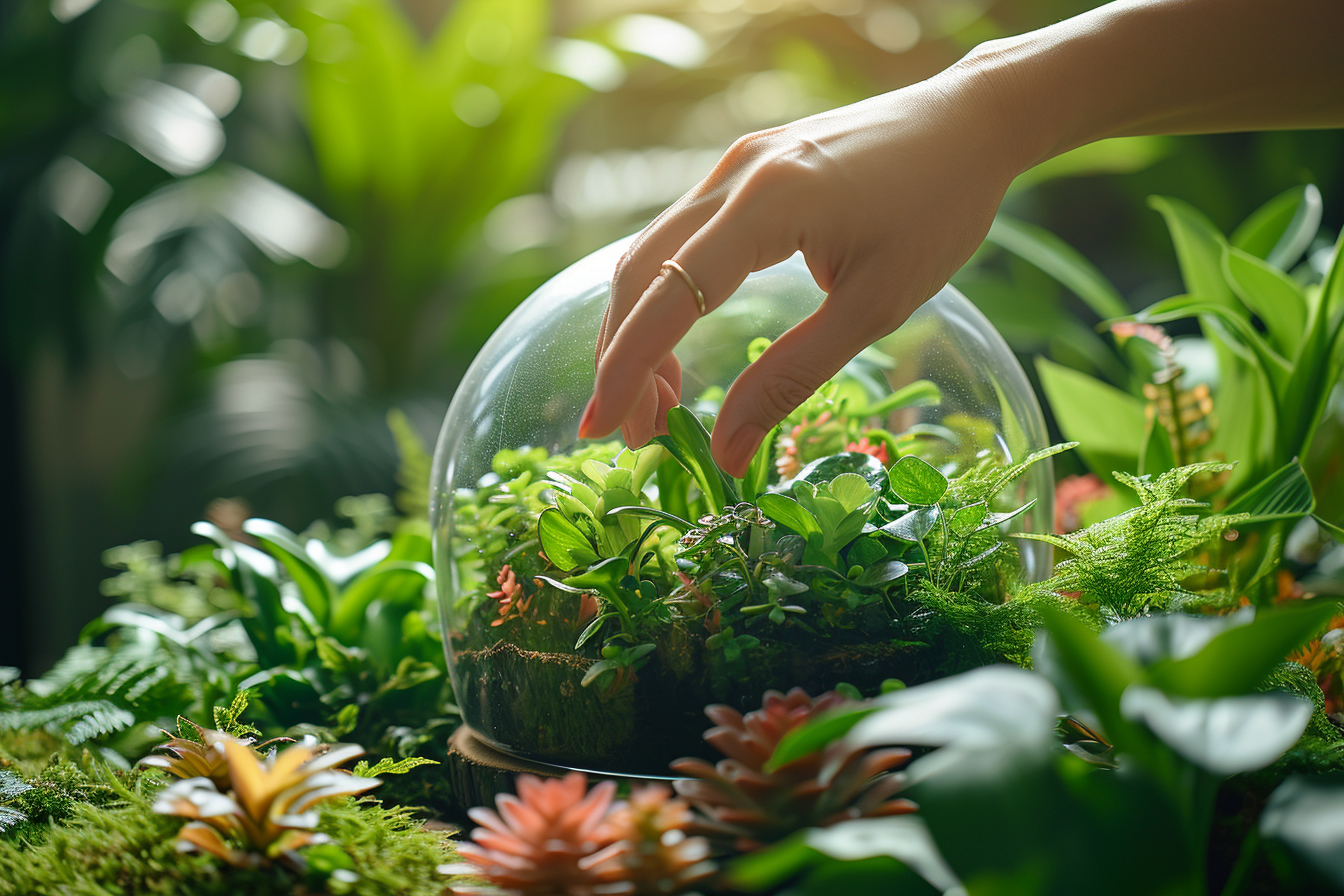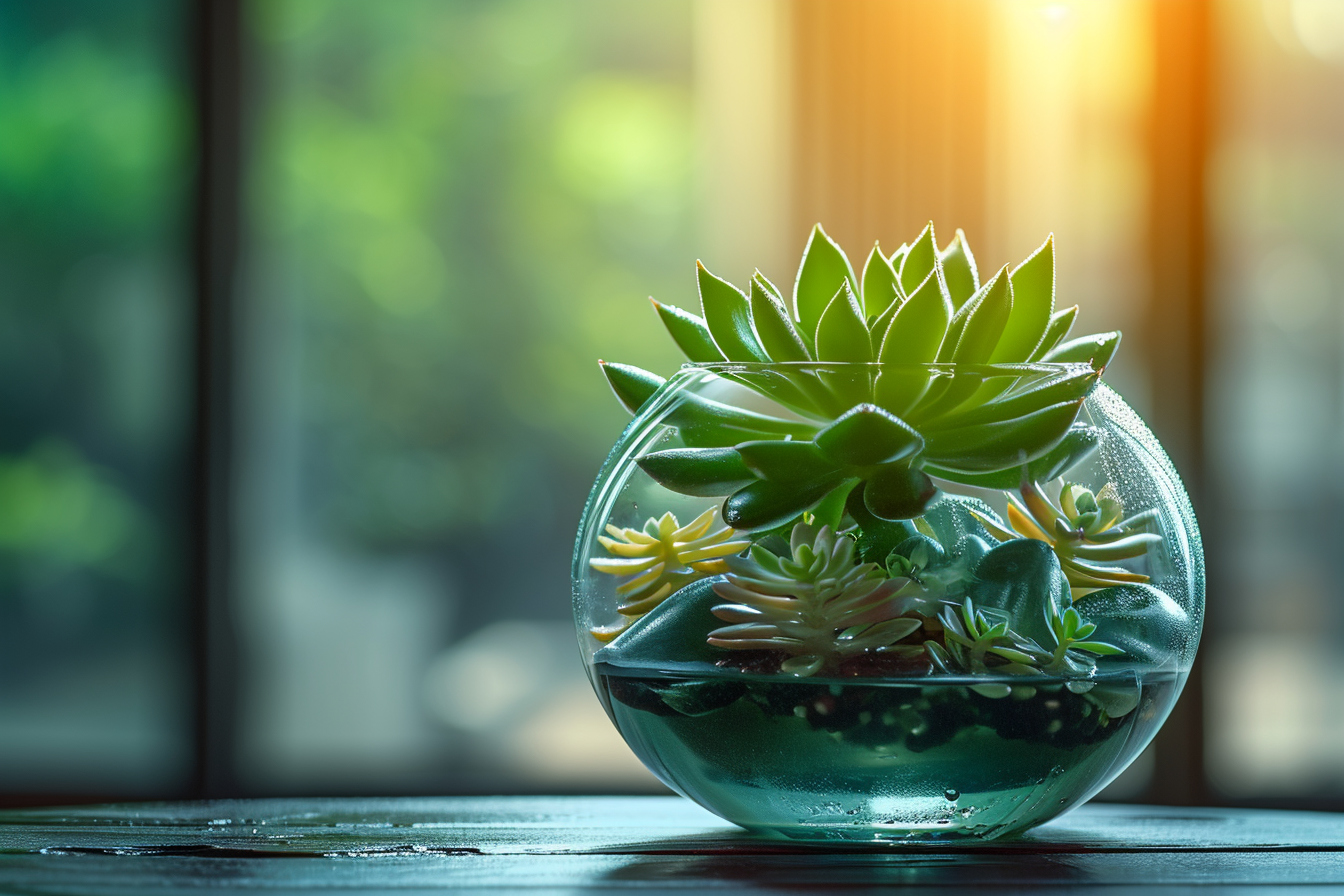Creating a lush environment for rare exotic plants within the confines of a glass terrarium can be a rewarding endeavor. It merges the beauty of nature with the artistry of arrangement, culminating in a miniature ecosystem that can transform spaces and bring the serenity of the great outdoors into your home or office. This write-up delves into the nuances of curating and sustaining terrarium environments suited for the growth of rare exotic plants. By adhering to these essential conseils, both novice and seasoned horticulturists can achieve success in this fascinating corner of botany.
Understanding the terrarium concept
A terrarium is essentially a self-contained plant ecosystem housed within a transparent container, usually made of glass. It can either be open-air, allowing for the free exchange of the atmosphere, or sealed, which creates a unique, self-sustaining microclimate. The latter is especially intriguing as it requires careful consideration of moisture, light, and the plants’ mutual compatibility to maintain balance.
Selecting the ideal container
Choosing an appropriate container is the foundational step in building a terrarium. The size and shape of the container dictate not only the selection of plants but also the availability of light and the circulation of air. Larger containers support more significant biodiversity, while smaller ones limit the number of species able to thrive. Angular containers contribute to a compelling visual aesthetic but may create challenges with light distribution. Conversely, rounded or globular containers distribute light more evenly but may distort the view of the plants inside due to refraction.
Crafting the perfect microclimate
Designing a microclimate conducive to the survival and prosperity of rare exotic plants requires precise control over several environmental factors:
humidity
Terrariums, particularly sealed ones, maintain a level of humidity not commonly found in indoor environments. Controlling humidity is pivotal. Orchids, ferns, and carnivorous plants often prefer high humidity, mimicking their native tropical habitats. A layer of gravel or clay pellets at the base of the terrarium can serve as a water drainage system, preventing excessive moisture from causing root rot. The inclusion of charcoal is also beneficial, as it helps absorb odors and cleanse water within a closed terrarium.
temperature
Temperature regulation is another aspect that demands vigilant monitoring. Exotic plants may require a warmer microclimate, which can be achieved by placing the terrarium near natural light sources or by using artificial heat mats. Beware of direct sunlight, though, as it can quickly escalate the internal temperature and harm the plant life.
light
Appropriate lighting cannot be overstated. It’s not just about quantity but also the quality of light. Many exotic plants thrive in bright, indirect sunlight. Direct sunlight can cause a greenhouse effect, overheating the terrarium. It’s not just the intensity but also the duration of light exposure that matters—most exotic plants benefit from a day/night cycle. Hence, positioning the terrarium in a spot that mirrors this natural rhythm is essential for plant growth and development.
Soil composition
The choice of soil is another determinant for thriving exotic plants. A mixture of peat, sand, and soil can accommodate the needs of most terrarium plants, providing adequate drainage and nutrient content. Yet, some rarer exotics might need more specialized blends, including non-soil substrates like bark or coconut fiber.
Plant selection and arrangement
Choosing plants that are compatible in terms of their environmental needs is crucial. A common mistake is to mix desert-dwelling succulents with moisture-loving tropicals; while aesthetically pleasing, such combinations are practically unsustainable in the long run.
Focal plants
Choosing a focal plant is an effective design strategy. It could be a particularly striking exotic species that dictates the choice of accompanying plants and overall aesthetic of the terrarium. Ensure the focal plant is proportionate to the size of the container and allow it enough space to grow.
Complementary flora
Add complementary plants that not only share similar care requirements but also contrast and enhance the beauty of the focal plant—think in terms of texture, color, and height. The overall composition should draw the eye throughout the terrarium rather than to a single point.
Maintenance and care
Even with the right setup, ongoing care is a responsibility that comes with cultivating a terrarium.
pruning
Regular pruning helps maintain the aesthetic of the arrangement and prevents more vigorous plants from overtaking their neighbors. It also encourages healthy growth and can prevent disease.
watering
Watering must be done with caution; overwatering is a common misstep that can lead to mold growth and root rot. In sealed terrariums, the water cycle should self-balance, but open terrariums will need occasional watering, best done with a spray bottle to mimic natural mist.
monitoring
Regularly monitor the health of the plants and watch for signs of distress, such as discolored leaves or stunted growth. Vigilance can prevent potential problems from escalating and ensures that interventions are timely and effective.
cleaning
Keeping the glass clean on both the inside and outside not only improves the appearance of the terrarium but also permits maximum light penetration, which is vital for photosynthesis.
Navigating challenges with rare exotic plants
The very rarity that makes exotic plants alluring also presents unique challenges.
acclimatization
When introducing exotic plants to the terrarium, they might require a period of acclimatization. Gradually introduce any new plant to the environment over several days to reduce transplant shock.
Pests and disease
Pests and disease can be particularly problematic in the closed environment of a terrarium. Inspect new additions thoroughly before introducing them and be proactive with organic pest control methods if necessary.
Conservation and ethical considerations
With the growing interest in exotic plants, conservation becomes a paramount concern. It is vital to source plants ethically, avoiding those that may be endangered or collected from the wild without proper permits. Opt for nursery-grown plants that have been propagated responsibly, ensuring sustainability.
Expanding knowledge and experience

Continual learning is an essential part of mastering terrarium environments. Networking with other enthusiasts, joining forums, and attending workshops can provide valuable insights. You may discover novel species, new arrangement ideas, and troubleshoot problems with a community of those who share your passion.

Creating the ideal terrarium for rare exotic plants is both an art and a science. It requires dedication, patience, and an acute attention to detail. Mastery of terrarium environments enables one to sustain these verdant microcosms, where the allure of the rare and exotic finds its home in a meticulously crafted world of glass.


Leave a Reply